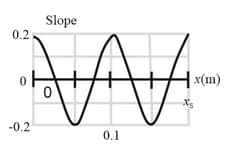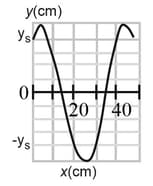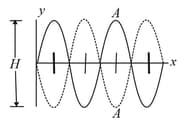Resnick & Halliday Solutions for Chapter: Waves-I, Exercise 1: Problems
Resnick & Halliday Physics Solutions for Exercise - Resnick & Halliday Solutions for Chapter: Waves-I, Exercise 1: Problems
Attempt the practice questions on Chapter 16: Waves-I, Exercise 1: Problems with hints and solutions to strengthen your understanding. Principles Of Physics International Student Version solutions are prepared by Experienced Embibe Experts.
Questions from Resnick & Halliday Solutions for Chapter: Waves-I, Exercise 1: Problems with Hints & Solutions
A uniform rope of mass and length hangs from a ceiling.
(a) Show that the speed of a transverse wave on the rope is a function of , the distance from the lower end, and is given by
(b) Show that the time a transverse wave takes to travel the length of the rope is given by
The speed of a transverse wave on a string is when the string tension is . To what value must the tension be changed to raise the wave speed to
A sinusoidal transverse wave is traveling along a string in the negative direction of an axis. In the Figure shown below shows a plot of the displacement as a function of position at time , the scale of the axis is set by . The string tension is , and its linear density is . Find the
(a) amplitude.
(b) wavelength,
(c) wave speed, and (d) period of the wave.
(e) Find the maximum transverse speed of a particle in the string.
If the wave is of the form what are
(f) ,
(g) ,
(h) and
(i) the correct choice of sign in front of
Use the wave equation to find the speed of a wave given in terms of the general function
.
A transverse sinusoidal wave is moving along a string in the positive direction of axis with a speed of . At the string particle at has a transverse displacement of and is not moving. The maximum transverse speed of the string particle at .
(a) What is the frequency of the wave?
(b) What is the wavelength of the wave?
If is the form of the wave equation, what are
(c)
(d)
(e)
(f)
the correct choice of sign in front of
A sinusoidal wave travels along a string under tension. The figure shown below gives the slopes along the string at time The scale of the axis is set by What is the amplitude of the wave?

A string oscillates according to the equation,
What is the
amplitude
speed of the two waves (identical except the direction of travel) whose superposition gives this oscillation?
What is the distance between nodes?
What is the transverse speed of a particle of the string at the position when ?
Two sinusoidal waves with the same amplitude and wavelength travel through each other along a string that is stretched along the axis. Their resultant wave is shown twice in the figure shown below, as the antinode travels from an extreme upward displacement to an extreme downward displacement in . The tick marks along the axis are separated by , height is Let the equation for one of the two waves be of the form In the equation for the other wave, what are
(a)
(b)
(c)
the sign in front of


